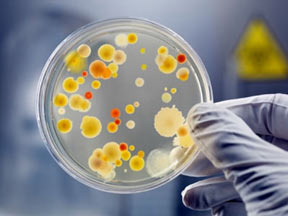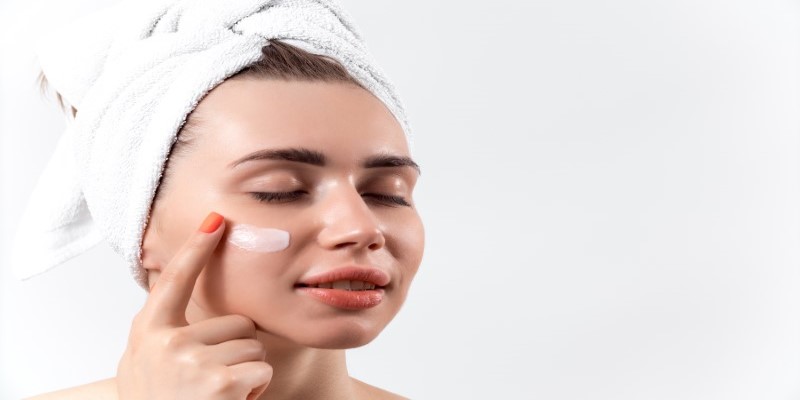Acne – Symptoms and Diagnostic Tools
Dec 17, 2023 By Nancy Miller
A huge number of people around the globe experience the common skin condition, acne, which requires a meticulous diagnostic approach. Therefore, it is crucial to comprehend the diagnosis of acne for effective treatment. Our overall well-being reflects through our skin health like a mirror. Thus, an accurate diagnosis directs skincare professionals to customize interventions accordingly. The layers of diagnosing acne are unraveled in this article. It delves into assessing the skin condition and recognizing specific symptoms.
How to Diagnose Acne?
Skin Condition Assessment:
Skilled dermatologists, employing a systematic approach, initiate the diagnosis of acne by comprehensively assessing the condition of the skin. They evaluate myriad factors such as skin type, levels of oiliness, and the presence or absence of other skin conditions.
This strategic assessment is crucial as it unveils unique characteristics specific to an individual’s skin, thus laying down precise groundwork for accurate diagnoses.
Texture and Tone:
Dermatologists fundamentally examine the texture and tone of the skin. They scrutinize its surface for irregularities and assess if it is smooth or exhibits rough patches. Insights into potential causes can be derived from variances in tone, ranging from pigmentation to redness.
Sebum Production:
Crucially, we must assess sebum production as an excess of oil can block pores and cause acne. Dermatologists analyze the skin's oiliness. They ascertain whether overactive sebaceous glands are contributing to this condition. It’s a vital step in formulating appropriate treatments that regulate sebum production.
Diagnosing Acne Symptoms
A spectrum of symptoms manifests in acne, offering valuable insights into the underlying causes. Therefore, recognizing this comprehensive array is not just important for an accurate diagnosis, it's crucial.
- Comedones:
Primary indicators of acne include the presence of comedones, both open, known as blackheads, and closed, referred to as whiteheads. Dermatologists meticulously assess their distribution, a key factor in diagnosis, size, and characteristics to form a foundational basis for identifying this condition.
- Inflammatory Lesions:
Acne, beyond encapsulating classic comedones, frequently incorporates inflammatory lesions. These further stratify the condition:
- Papules: Small, red, inflamed bumps on the skin.
- Pustules: Pimples containing pus at the center.
- Nodules: Large, solid, painful lumps beneath the skin.
- Cysts: Deep, pus-filled lesions causing severe inflammation.
Determining the severity and type of acne benefits from an analysis of these lesions' prevalence and nature.
- Distribution Patterns:

Dermatologists observe the distribution of acne across specific areas, face, neck, chest, or back. This provides a significant diagnostic clue. By noting whether acne is concentrated in the T-zone or jawline, or exhibits a more widespread pattern, it hints at potential triggers.
- Post-inflammatory Hyperpigmentation:
Post-inflammatory hyperpigmentation can persist as hyperpigmented marks after an acne lesion resolves. This chronicity informs our treatment approach. We gauge the condition's longevity by assessing the presence and extent of these marks.
- Scarring:
In advanced cases, acne may result in scarring. Dermatologists scrutinize the scars' nature. Whether atrophic (depressed) or hypertrophic (raised), to gauge their long-term effect on skin health.
- Lesion Morphology:
Dermatologists, in their analysis of acne lesion morphology, discern additional nuances. They ascertain the uniformity or variation in size and appearance. This information is integral to tailoring treatment strategies and proves crucial.
- Secondary Infections:
Severe acne can be accompanied by complications, such as secondary bacterial infections. Dermatologists examine for infection indicators, heightened redness, warmth, and the existence of pustules. To effectively manage acne, addressing these secondary infections becomes crucial.
- Exacerbating Factors:
Diagnosis hinges on the crucial identification of factors that exacerbate acne. Exploring lifestyle elements including diet, stress, and skincare habits, dermatologists aim to uncover potential triggers contributing to recurrent outbreaks.
- Hormonal Fluctuations:
Distinct symptoms, such as cyclical breakouts that correspond to the menstrual cycle, are a presentation of acne linked with hormonal fluctuations. Recognition and understanding of these patterns assist in identifying the pivotal role of hormonal imbalances in developing acne.
- Dryness and Peeling:
Topical treatments have the potential to induce dryness and skin peeling in certain acne medications. Dermatologists monitor these side effects, which provide them with information about the specific interventions' impact on the patient's skin. This guides them to make necessary adjustments in their treatment plan.
- Itchiness and Irritation:
Prone to itchiness and irritation, acne-prone skin presents a unique set of challenges. By recognizing these symptoms, we can tailor skincare routines and select products that not only alleviate discomfort but also prevent the exacerbation of acne.
Advanced Diagnostic Tools
Dermatologists, in complex cases, employ advanced diagnostic tools. They delve deeper into the underlying causes of acne.
- Skin Biopsy:
In challenging cases, specialists may recommend a skin biopsy. This procedure involves the extraction of a small skin sample, an action taken for microscopic examination. The identification of specific skin conditions is aided by it and simultaneously rules out other potential causes of acne.
- Microbial Analysis:

Medical professionals also employ microbial analysis to identify specific bacteria present on the skin. Notably, they scrutinize Propionibacterium acnes, a bacterium associated with acne, to determine its abundance and role in exacerbating this condition.
- Hormonal Assessments:
Dermatologists may recommend hormonal assessments in suspected cases of hormonal imbalances, analyzing hormone levels yields valuable insights into potential triggers. This approach enables a targeted method for treatment.
Personalized Treatment Approaches
Dermatologists, possessing a comprehensive understanding of the skin's condition and specific symptoms related to acne, actively craft personalized treatment approaches.
- Topical Medications:
Dermatologists frequently prescribe topical medications for mild to moderate cases. These could encompass retinoids, antibiotics, or a customized combination targeting the individual's specific acne characteristics.
- Oral Medications:
In more severe cases, specialists may recommend oral medications such as antibiotics, hormonal therapy, or isotretinoin. Each of these pharmaceuticals targets distinct aspects of acne pathology, thus, providing a multifaceted approach to treatment.
- Lifestyle Modifications:
Lifestyle modifications, as dermatologists underscore, are crucial complements to medical interventions. These include dietary adjustments, effective stress management (an often-underestimated factor in skin health), and the establishment of rigorous skincare routines. Such measures play pivotal roles not only in managing but also in preventing acne outbreaks.
Conclusion
Concluding, diagnosing acne involves a nuanced process. It demands an acute comprehension of the individual's skin condition and particular symptoms. Dermatologists utilize a multifaceted approach, from meticulous assessments of the skin condition to advanced diagnostic tools, to reveal acne's root causes.
Armed with this knowledge, they craft personalized treatment plans that address each person’s unique needs. The first step to achieving clear and healthy skin entails grasping the diagnosis process of acne.

What percentage of stroke patients make a full recovery?

Guard Your Skin this Fall: 5 Proactive Skincare Tips

Debunking Myths: Why Using Toothpaste for Acne is a Bad Idea

Discovering Goldenseal - A Natural Marvel

Bleeding Nose? Practical Tips for Immediate Relief and Prevention

Unraveling the Causes behind Depression: A Comprehensive Overview

6 best stretching exercises for tight leg muscles


